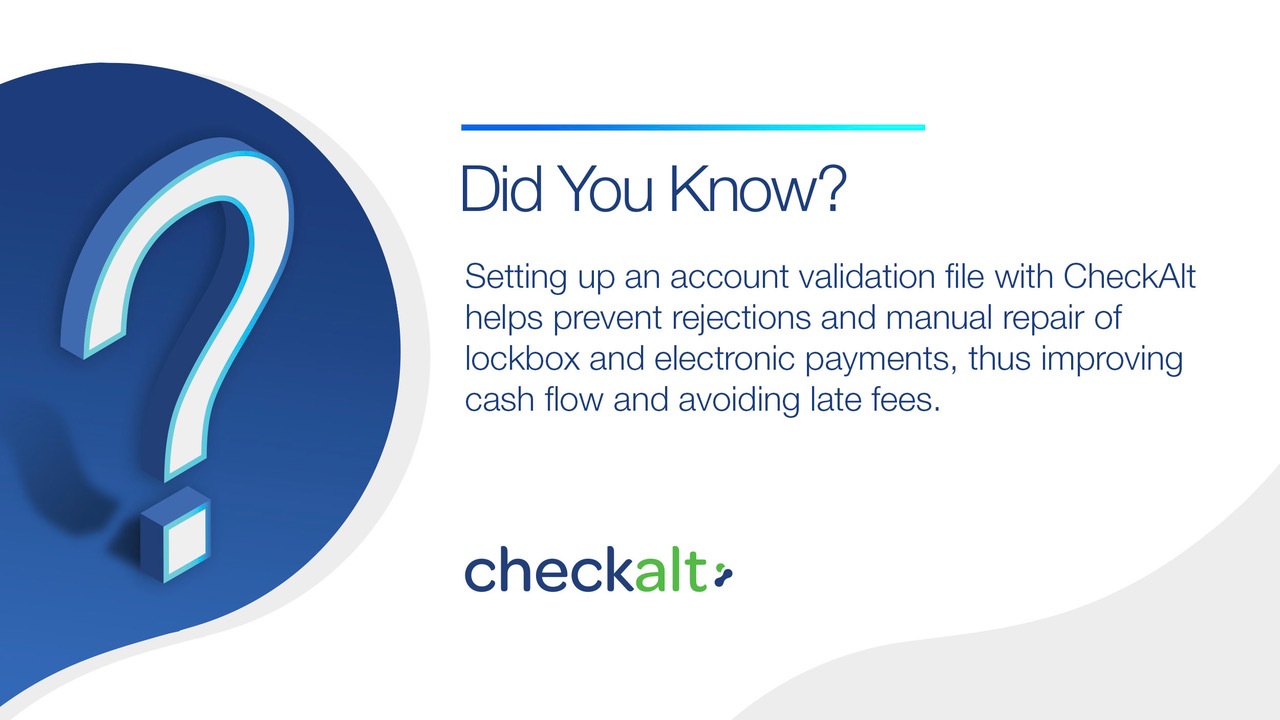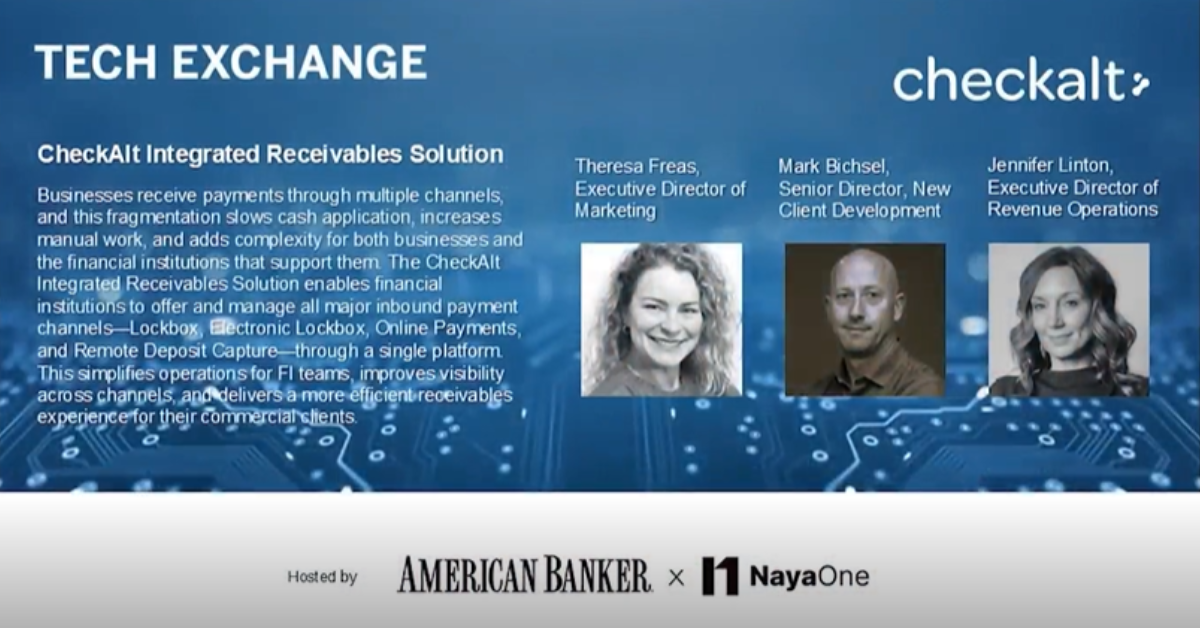Modern Receivables, Simplified: Why Financial Institutions Are Turning to an Integrated Approach
Receivables are becoming harder to manage across separate systems. See how an integrated approach brings those channels together for a modern...

Did you know that setting up a validation file with CheckAlt prevents rejections and manual repair of lockbox payments, thus improving cash flow and avoiding late fees?
When CheckAlt implements a new lockbox services client, our team requests what is known as a validation file—a basic data file that identifies payment recipients and deposit account information on a per-customer basis. Validation files allow CheckAlt to dig deeper and ensure payments are properly attributed, avoiding manual entry that can slow down cash flow and cause late fees.
Such a basic requirement should be standard, but some banks and credit unions are driven to get started fast and ask to forego the validation file. In recently onboarding a new lockbox client, this situation came up. Against CheckAlt’s advisement, a client requested we implement their new lockbox setup without a validation file. Soon after, exception items started piling up. The client then had to spend time and money wading through those held payments to review and either correct them or decline them.
Although including a validation file when implementing this new lockbox client would have taken no more than an additional 48 hours to implement, the results would have been much fewer exceptions.
Mistakes can happen in haste. Taking an extra step, even if it slows the process in the moment, can mean the difference between success and failure. This rule applies to many areas of business and is why we at CheckAlt take pride in creating the best outcomes for our clients.
Learn more about our lockbox services product here.

Receivables are becoming harder to manage across separate systems. See how an integrated approach brings those channels together for a modern...

The Top 5 Most-Read Articles of the Year 2025 offered clear insight into what our audiences valued most: practical AI adoption, stronger fraud...

With Gen Z gaining financial independence, banks and credit unions face a generational inflection point. These digital natives—born between 1996 and...